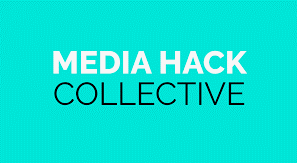
Media Hack Collective offers a treasure trove of lessons for journalists aiming to enhance their storytelling with data. The organisation won a WAN-IFRA award this year for their project “A Perfect Storm,” which focused on coastal resilience following the Durban floods. This accolade highlights their innovative approach to data journalism. Here’s how you can leverage their techniques to improve your own reporting.
1. Focus on Solutions Journalism
Media Hack’s project “A Perfect Storm” on the Durban floods showcases their focus on solutions journalism. Instead of just reporting the disaster, they explored coastal resilience and potential solutions. When covering complex issues like climate change, strive to present actionable insights alongside the problems. Incorporate data analysis and visualizations to support your narratives, using tools like QGIS, Leaflet, and Google Sheets.
2. Engage with Your Audience
Media Hack’s grocery basket comparison project became a hit by addressing a topic relevant to many South Africans: rising food prices. Engaging with the audience through relatable content can significantly boost your reach. Collect and analyse data that directly impacts your audience’s daily lives. Tools like Flourish and Figma can help you present this data in an easily digestible format.
3. Collaborate and Network
Collaboration is key to Media Hack’s success. They work with artists, data specialists, and other journalists to enrich their projects. Building a network of experts in various fields can enhance your reporting. Don’t hesitate to reach out to colleagues, academics, and professionals who can contribute to your stories.
4. Adapt and Innovate
Media Hack is known for its adaptability and willingness to innovate. For instance, when traditional data sources were scarce, they created their own datasets. Be prepared to adapt your methods and find creative solutions to challenges. Embrace new tools and techniques, and continually refine your approach based on feedback and results.
5. Make Data Accessible
One of Media Hack’s strengths is making complex data accessible and engaging. Whether through interactive maps, detailed charts, or clear narratives, strive to present data in a way that is understandable to a broad audience. Tools like D3 can help you achieve this.
6. Utilise Data Visualisation Tools
Media Hack frequently employs a range of data visualisation tools to make their stories more compelling. For mapping, they use QGIS and Mapshaper. For visualisations, D3, Flourish, and Figma are their go-to tools. Learning these tools can significantly enhance your ability to tell stories with data.
Conclusion
Media Hack Collective provides a blueprint for effective data journalism. By focusing on solutions, engaging with your audience, collaborating, adapting, making data accessible, and utilising advanced data visualisation tools, you can enhance your storytelling and have a greater impact with your reporting.
